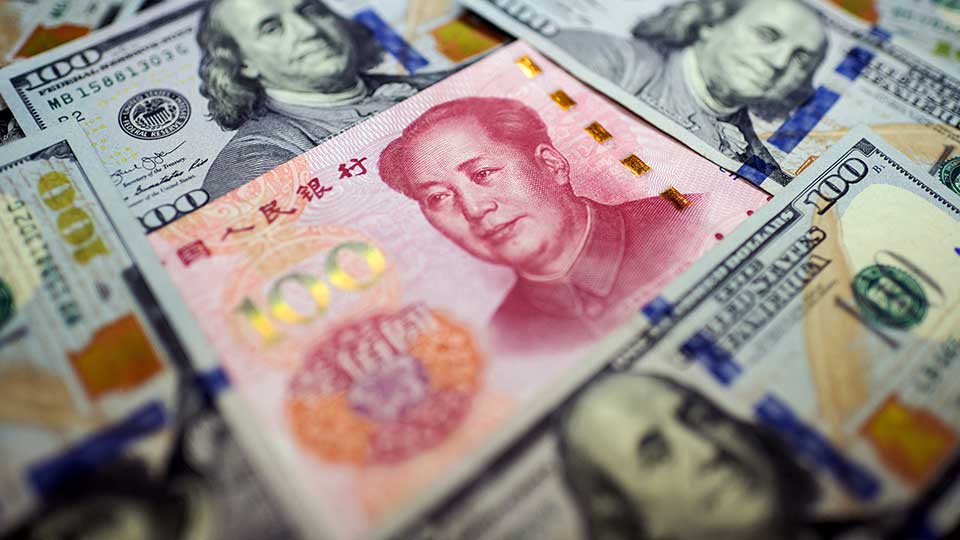
By Kevin Gallagher, Marina Zucker-Marques and Barbara Fritz
A recent World Bank paper – widely echoed by financial outlets – has raised concerns about a supposed Chinese “emerging system of cross-border bailouts”, composed mostly of currency swap agreements. To the authors, Chinese swaps are opaque and costly, and their use by debt-stressed countries makes the international financial architecture more multipolar, opaque and less institutionalized.
However, the current international financial system is flawed and asymmetric, and China is taking on the role of a responsible stakeholder by providing crisis finance to countries that would otherwise have no other attractive options. What is more, Chinese swaps do not function differently than swaps made by the US Federal Reserve. To understand the debate over currency swaps, it is crucial to understand that a double standard has been applied to Chinese swaps, as well as that while primarily driven by national interests, swaps serve to stabilize debtor and creditor countries alike and Chinese swaps partially correct for the inequalities of the global financial safety net.
First, there is an astonishing double standard regarding liquidity support offered by China compared to advanced economies. Offering swaps is not exclusive to China. The expansion of this instrument began with the Fed response to the 2008 financial crisis and soon became the most powerful instrument to address global financial stress. Over $500 billion has been accessed by the five big central banks, through permanent and unlimited swap networks, and about $80 billion through limited and ad-hoc lines to other advanced and large emerging economies. Concomitantly, the maximum use of swaps by the People’s Bank of China (PBOC) is about $12 billion – an official figure significantly lower than estimated by the World Bank paper. US Fed swaps have been depicted as a welcome tool to preserve market stability, rather than as a “bailout.” While Chinese swaps may take longer to be repaid, developing countries lack access to sufficient liquidity, allowing crises to linger for years. Meanwhile, advanced economies can staunch a crisis quickly with the Fed’s unlimited swap lines.
Second, both the US and China use swaps to primarily serve national interests, which undercuts the multilateral nature of emergency finance provided by the International Monetary Fund (IMF). The US selects swap partners based on close economic ties and geopolitical interests. The Fed argues swaps are important to ease stress in global funding markets and the effects on households and businesses. The same holds for China’s renminbi swaps: they may help developing countries in debt distress maintain trade and financial links with China, a relevant economic partner for many of them. In essence, Chinese and American swaps are not that different, as both prevent further financial damage for the debtor and creditor countries.
Third, and most importantly, the World Bank paper overlooks how Chinese swaps partially correct for the enormous inequalities in the Global Financial Safety Net (GFSN) that offers a temporary balance of payments liquidity. The GFSN is a set of institutions and mechanisms that provide insurance against crises and financing to mitigate their impact on economies. The GFSN has three main layers: bilateral swap arrangements whereby central banks exchange currencies to provide liquidity to financial markets; regional financial arrangements by which countries pool resources to leverage financing in a crisis and the IMF. During the COVID-19 pandemic, the GFSN reached a peak of roughly $3.7 trillion. But not all countries benefited from its resources. Developing countries – especially low- and lower-middle-income countries – are only marginally insured and 83 developing countries have no options under the GFSN and have to rely solely on the IMF for crisis finance.
But no one wants to go to the IMF. IMF programs favor the geopolitical allies of Western countries and condition their loan packages on austerity programs that accentuate poverty and inequality and seldom return a country to stability and growth. China has long been a critic of these IMF policies. While the Fed swaps reinforce the GFSN inequalities – as most are offered to high-income and a few better-off emerging markets – Chinese swaps represent an alternative to unattractive IMF programs for several middle-income countries.
Chinese swaps are no silver bullet to solve the GFSN’s asymmetries, but they can help reduce its inequities. As international conditions deteriorate, developing countries’ liquidity needs are increasing. Currently, 36 out of 69 low-income countries are in, or close to debt distress. Given the difficulties in accessing liquidity, it is no wonder that a growing number of countries are drawing on Chinese swaps.
The GFSN today is unequal, fractious, and increasingly driven by geopolitics. The world needs a true lender of last resort. Neither the Fed nor the PBOC should play that role, rather, it should be an IMF that supports rich and poorer countries equally. To do this, the Fund needs to make its lending more attractive by overhauling conditionality policies, providing faster disbursements and increasing availability of funds.
Kevin P. Gallagher is the Director of the Boston University Global Development Policy Center and a Professor of Global Development Policy at the Boston University Frederick S. Pardee School of Global Studies. He is a Co-Chair Member of the Debt Relief for a Green and Inclusive Recovery Project. Follow him on Twitter: @KevinPGallagher.
Marina Zucker-Marques is a Post-doctoral Researcher at SOAS, University of London and affiliated with the Debt Relief for a Green and Inclusive Recovery Project. Previously, she worked at the United Nations Conference on Trade and Development (UNCTAD) in the Debt and Development Finance Branch. Follow her on Twitter: @MarinaZucker.
Barbara Fritz is a Professor of Economics of Latin America at the Freie Universität Berlin. She leads the Global Finance Safety Net Tracker project, coordinated between the Boston University Global Development Policy Center, UNCTAD and Freie Universität Berlin.








